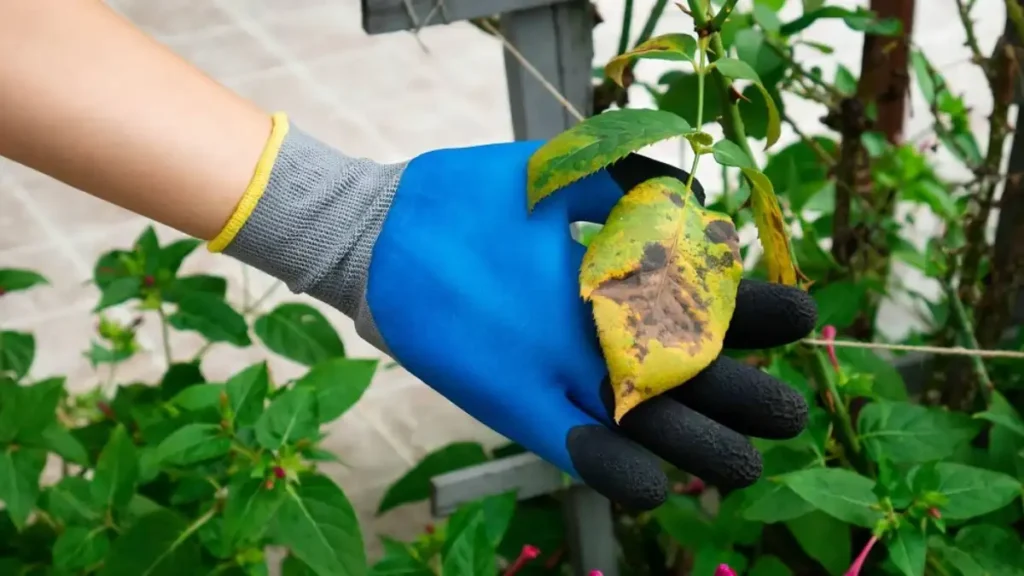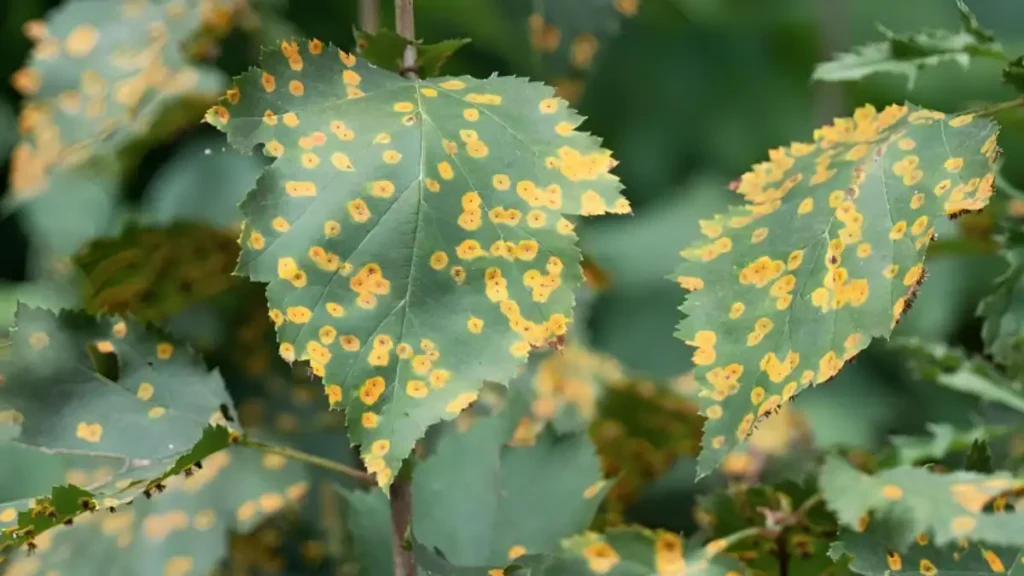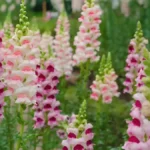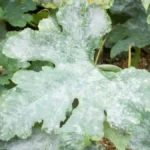A fungal illness called rust disease mainly affects ornamental plants, trees, and crops. It is caused by several species of fungi in the pucciniales group. The disease is named after the reddish-brown, rusty spores that develop on affected plants. In addition to being unsightly, rust fungus can spread swiftly and seriously harm a plant’s leaves, fruits, or vegetables. This article explains how to get rid of rust fungus.
Let’s know the rust fungus symptoms:
Leaves stems, and other plant parts are the main targets of rust disease, a plant disease brought on by a variety of fungal species. Rust fungus symptoms include.
Rust disease Identification:
- The rust-colored leaves and stems of plants are indicative of the illness. It’s likely that the plant rust will show up on the underside of the leaves. As the illness progresses, the leaves may turn yellow and die, damaging the plant’s overall health.
- Infected leaves might become twisted or distorted. Dropped leaves cause the plant to grow more slowly and develop pale patches that collect spores and change color. Fungal spores may be released as a powder when the pustules are touched.
- Plant development is stunted because of decreased photosynthesis and fading leaves. In severe situations, the plant may have limited development due to decreased energy production and leaf loss.

Learn about rust disease treatment:
Rust disease is a fungus that infects a variety of plants. Rust disease has impacted aster, lily, Snapdragon, sunflower, sweet peas, and other trees. These are some efficient therapies and procedures.
Rust fungus treatment:
- Eliminate Infected Leaves
Remove impacted leaves as soon as a rust color appears on plant leaves if your plant is impacted by plant rust. The earlier you can remove the infected leaves, the higher your plant’s chances of survival. After that, apply a fungicide, such as neem oil, to your plant. Ensure that these leaves are disposed of.
- Increase the Circulation of Air
Rust flourishes in wet environments, so avoid overwatering your plants. Pruning crowded areas and properly spacing plants will improve air circulation. Additionally, ensure that there is adequate airflow around the plant and within its branches.
- Water the plant precisely
Assessing your watering habits and, most importantly, ceasing overhead watering are the most crucial things you can do to lessen rust in your flower bed. A damp leaf promotes the growth of fungi. To stop rust spores from splashing onto the leaves during watering or when it rains, mulch the soil.
- Organic & Fungicide Methods of Control
Neem oil is a botanical pesticide and fungicide that also inhibits rust. Mixing baking soda spray with mild horticultural oil may increase its effectiveness. Apply fungicides if the infection is severe; if you’re looking for chemical solutions, try fungicides that contain myclobutanil or chlorothalonil.
- Utilizing Industrial Fungicides for Control
As soon as sickness symptoms appear, apply the sprays, and continue applying them as directed on the container until July. Look for commercial fungicides with these active components. Most rust kinds are eliminated by myclobutanil. Seek advice from the cooperative extension service in your area.
- Varieties That Resist
Planting rust-resistant types requires adequate space for growth. Verify that newly acquired plants are free of rust fungus before taking them home. Plant rust-resistant cultivars if available. This can lower the risk of infection as a preventive measure. For a few weeks before you plant new plants in the garden with your existing species, keep them apart from the others.

Conclusion:
In conclusion, a combination of chemical treatments, biological controls, and cultural practices is needed to effectively cure rust disease. Fungicides are commonly used to prevent rust. Since moisture encourages the formation of rust fungus, water plants at the base to prevent wetting the leaves. Farmers and gardeners can better control rust fungus by combining these techniques.
Certainly! If you’d like to learn more, please consider following our WhatsApp Channel: Harvest Gardening
A frequently asked questions:
Q1. What is rust fungus?
A1. A genus of fungi known as rust fungus produces spores that mostly harm leaves but can also infect stems, flowers, and fruits. It manifests on the surface of the plant as pustules or rust-colored patches.
Q2. What is the best fungicide for rust fungus?
A2. Fungicides that contain active chemicals like propiconazole or chlorothalonil are the best for treating rust fungus. By properly targeting rust, these chemicals stop it from spreading.
Q3. What is rust disease in humans?
A3. Although healthy individuals are normally not at risk from rust fungi, they can get infections or allergic reactions if they are exposed to them. individuals do not get rust disease as plants do.
Q4. How to treat rust fungus on plants?
A4. Infected plant components can be removed or fungicides can be used to treat rust disease. Reducing moisture and increasing air circulation can help stop it from spreading.
Q5. How to get rid of rust disease on grass?
A5. Grass rust disease is brought on by fungi. Maintaining healthy grass by appropriate mowing, frequent fertilization, early-morning watering, and choosing rust-resistant grass types can help prevent rust disease.



